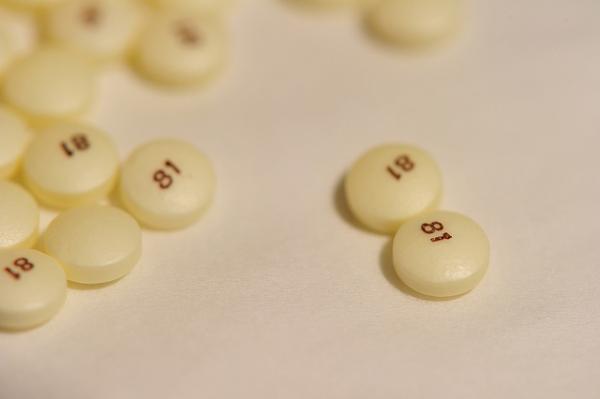Several years ago, the saying, an apple a day kept the doctor away, morphed with aspirin replacing the apple. The basis for the change, the finding that aspirin when given at the time of a heart attack or given to individuals who had had a heart attack resulted in longer survival for these individuals.
While there are many ways in which the heart can be “attacked,” the final pathway involves clots forming in the arteries of the heart and the loss of oxygen killing the heart cells. The beneficial effect of aspirin was on the formation of those clots; it impairs the rapidity and quality of the clot form; if warfarin or the novel anticoagulants (like Apixaban, Eliquis) fully impair your clotting, aspirin’s effect is much, much less – “anticoagulation light.”
Given the good outcomes for patients, aspirin’s inexpensive price [1], and its therapeutic profiles with almost no bothersome side effects, the prescriptions for aspirin were a win-win for those at risk. But then “indication creep” began; after all, it helped these patients with heart disease, why not give it to those at risk – surely it couldn’t hurt, and it might very well help and to be honest given the cost of drugs this was as cheap as they get.
It turns out; indication creep was stronger than more formal risk-benefit studies.
“The evidence supporting a benefit of aspirin therapy in the primary prevention of cardiovascular or other chronic disease is less conclusive despite favorable trends suggesting that aspirin use reduces the incidence of cardiovascular events…”
That’s a lot of words to say we don’t know. But again the siren song of a low cost, low-risk treatment were strong, and we needn’t blame Big Pharma for this, the ability to give a patient a prescription and “treat them,” a therapeutic “parting gift” is strong for physicians, especially when it has so few side effects.
The news from the American College of Cardiology meeting and the New England Journal this week, among other reports, is that we got the risk-benefit analysis wrong, at least for those at lower cardiac risk, patients who have never had a heart attack. The study looked at roughly 20,000 individuals living without cardiac disease in the US or Australia; half gave 100mg of aspirin daily; the remaining half was given a placebo. They were studied over five years, and while patient compliance with the regimen decreased significantly, to roughly 60%, the compliance was virtually identical in both groups.
They found that aspirin conferred no benefit, the number of deaths, dementia and physical disabilities between the groups was almost identical – a 3% decrease for those taking aspirin.
But aspirin, as I mentioned “anticoagulation light,” does act as an anticoagulant and its effect increases with taking it on a chronic basis, although nowhere near as great as the effect of warfarin or its newer friends. And aspirin doesn’t know to just prevent clots in the heart; it acts everywhere. So bleeding, what we thought was an occasionally troubling event, turned out to be a lot more. This includes bleeding into the brain as well as bleeding into the upper or lower intestines that result in hospitalization, disability, and death. While the study demonstrated that the absolute risk of bleeding went from 2.8% in the placebo group to 3.8% in the aspirin group that reflects a 38% greater risk of bleeding in those taking aspirin – and all for a 3% improvement in outcomes. At this point the math of the risk-benefit calculation becomes clear, aspirin provides no advantage, and for some, it may result in greater disability. Aspirin for patients without known cardiac disease has no value.
[1] Aspirin’s dosage for heart disease is 81-100mg, the amount in a “baby” aspirin. About the same time as the initial heart studies were being conducted we discovered that Reye’s syndrome, an unintended consequence of a viral infection, was made more likely by children taking aspirin and aspirin quickly was removed from the treatments for children. St. Joseph’s and all the rest of the manufacturer’s fortuitously were able to rebrand those children’s dosages as cardiac doses; and yes, they did raise the price, after all, adults with heart disease have more money than kids.
Source: Effect of Aspirin on Disability-free Survival in the Healthy Elderly NEJM DOI: 10.1056/NEJMoa1800722
Effect of Aspirin on Cardiovascular Events and Bleeding in the Healthy Elderly NEJM DOI: 10.1056/NEJMoa1805819




